The Outer Worlds 2 is set a while after the events of the original game. You play as a member of the Earth Directorate, an organization that's theoretically dedicated to fighting the corruption and crime inflicted by tyrants and corporations on colonies outside of known space. During one of your missions to the distant colony of Arcadia, you accidentally get caught up in a massive explosion that kills your team, opens a massive rift in space that threatens to obliterate all nearby life, and leaves you trapped in cryostasis for 10 years. After being rescued, you're forced to find the source of the disaster and see if there's any way to save Arcadia from its inevitable doom. During this, you're also dealing with the tyrannical government and the "friendly" megacorporation Auntie's Choice that is trying to turn its newest capitalist hellscape into a "company town."
The Outer Worlds 2 is charming enough, but the story never grabbed me. It tones down the raw goofiness of the original Outer Worlds, creating something that feels more akin to a standard Obsidian-flavored game over the almost cartoonish atmosphere of the original. The result is something that potentially appeal to more people looking for Fallout Space, but also feels a little more generic. There's still a lot of comedy, but it feels more willing to be serious than the original game.
The characters are pretty fun and end up feeling a lot like Avowed's cast. You have a plucky ensign-turned-anxiety-ridden-mess Niles, your corporate-fixated half-monster Ines, your stab-loving doomer cultist Aza, and more. They're a pretty fun group, but you have to be willing to accept the idea that a group of people who have every reason in the world to loathe each other is willing to adventure together. Tristan, who is basically a fantasy Paladin with a penchant for enforcing rules the violent way, stands out as a guy who feels like he'd want to take a hammer to my protagonist's head if not for the obligation of video games. It lends some interesting friction to the cast dynamic, but perhaps this could've been integrated better.
On the surface, The Outer Worlds 2 is very similar to the first game and Obsidian's recent Avowed. Instead of a large open world to explore, there are several more dense environments that you travel between with your spaceship. Each environment tends to have a heavy dose of side-quests, and some exploration areas are bigger than others. I prefer this style, as it means there's less filler between cool areas, but it cuts back on the amount of exploration you can do.
Combat follows the standard Fallout-inspired mold. It's primarily a first-person shooter where you can invest in melee or various kinds of ranged weaponry, equip different gear for different bonuses, and approach combat in different ways, ranging from stealth to raw explosions. A lot of this feels very standard for the genre, and if you've played the previous game or recent titles from Obsidian or Bethesda, you have a good grasp of the basic mechanics.
Probably the most intriguing element of combat is the gadget system, which allows you to choose a customized scientific gadget to use in or out of combat. The first is a Time Dilation device, which effectively gives you bullet time on demand, but you rapidly unlock other tools, like an acid shooter, which can be used as a weapon or to dissolve bodies; a personal barrier that also repels gas; or a "N-Ray" scanner that emphasizes enemy locations, increases your crit rates, and reveal weaknesses. These all share an energy gauge, so you need to think carefully about which one to use, even though the gauge replenishes quickly.
The Outer Worlds 2 doesn't have a traditional stat system. At each level, you're given two skill points to spend on a small tree of skills, ranging from guns and melee to leadership and science. You can raise your skills equal to your current character level unless you've specialized in a skill, at which point it lets you go two points higher. These skills are used for various skill checks in the game, with more difficult checks requiring higher skills. Each also grants a passive bonus, such as Speech giving bonus damage to humans or Science increasing your gadget recharge rate.
Perks, which you get on every other level and occasionally from quests, represent a huge chunk of what you can do with character builds. Each perk is a significant change to how your character plays, and without investing in perks, you can't do a lot of things. Investing in Speech unlocks the Space Ranger perk, which boosts your damage for every level of Speech you have or Charlatan, which allows you to tell believable lies. In comparison, you can invest in Lockpicking, which lets you do everything from open doors to pickpocket humans. You can even go all-in on Leadership, which lets you power up your allies in fights and encourage random NPCs.
A side effect of everything being based around skills is that builds require more thought. Most RPGs of this type have you mash all your points into the best skill possible and be done with it. The Outer Worlds 2 rewards you more heavily for poking around in various trees. Investing in Stealth will go a long way, but you'll run into serious problems with mechanized enemies unless you also invest in Hacking a bit. Investing in Guns is great, but if you're all shoot and nothing else, then you might find yourself locked out of getting useful gear. It's often not worth investing in your best skill if you're already ahead of the curve; instead, it may be worth splitting the points between three or more skills.
One way that Outer Worlds 2 makes up for the relatively lower number of skills you can have is with its Flaw system. While playing the game, it keeps track of a number of different things you do in the game. Once you pass a threshold, you'll be offered a flaw based on what you do. Flaws come with a negative trait and a positive trait, so they're a potential trade-off. If you stand and duck a lot, you can take Bad Knees, which gives you +50% movement speed while crouched but makes your knees make popping noises, so they potentially alert enemies. Lead from the Back happens if you focus on fighting from a distance while your companions fight from the frontlines; this flaw gives you a 100% bonus to stealth damage in exchange for reduced maximum health. There's even one you get for purchasing the game's deluxe edition, which marks you as being vulnerable to marketing and consumerism, but it gives you a bonus discount at shops in exchange.
Flaws are a pretty neat concept, but you need to carefully consider before taking one. The benefits can be substantial, but so can the negatives. ZThere were several flaws that I turned down because they could've been game-ruining. I really like the idea of having a genuine trade-off for potentially strong bonuses or having the potential for a silly gimmick run. If nothing else, I laughed when a particularly absurd flaw popped up.
One of the coolest things The Outer Worlds 2 does is try to make every single skill and perk relevant somewhere in the game.It doesn't matter what it is, it'll come in handy somewhere. Obviously, things like Speech or Hacking have their fair share of benefits, but within conversations or exploration, you'll run into unexpected things. A perk I took that allows me to temporarily shut down robots could be used to side-step an entire quest. The negative flaw to be Sickly allowed me to frequently mention my ill health in conversation, which sometimes made people more sympathetic to my character. Even when I couldn't do something, the game would show the potential (unselectable) options, which underlines alternate paths I could've taken throughout the game.
This leads to a lot of different options for finishing missions. Sometimes you'll have a specific skill that lets you blaze a shortcut through a mission, but other times, you'll need to find the specific set of options to finish a quest. One mission requires you to find out what happened to a crashed ship. If you're a speechcraft master, you can talk with the various crew members. If you're sneaky, you can find a way into a black-market base and hack their computers. If you're an engineer, you can pick through the salvage looking for clues about what happened. This is probably the coolest part of the game's design, as I rarely felt like I'd run into a quest that wasn't for my character build; I just needed to figure out specifically how my character build would shine. The game shows you (in an obscured way) if there are alternate paths for certain conversations or missions, so that also drives more exploration, since you can often find information in notes or computers that open new dialogue options.
However, there are a few annoying moments when the game all but forces you into specific things, particularly heavy combat, which left me feeling dejected that I didn't invest heavily in a combat skill. You can find your way around some things, and gadgets and powerful weapons are usually enough to get you through a tough fight, but the weakest moments of the game are when it goes all-in on combat and your only option is to fight. Thankfully, this doesn't happen too often.
Overall, I enjoyed exploring the world. It doesn't reinvent the wheel, and if you strongly disliked the original The Outer Worlds, the sequel won't likely change your mind, but it's clear there was a lot of effort put into making the basic act of looking around and exploring the world feel more rewarding. The world feels a lot more alive than Avowed did, and gameplay mechanics offer more flexibility to approach things as you'd like.
The Outer Wilds 2 looks great. The environments are varied, and it's a delight to see combinations of decaying corporate-owned towns and fanciful alien worlds. The character models are well animated, and the costume design is absurd but memorable. The voice acting steals the show, with most of the voice acting carefully toeing the line between goofy and serious.
The Outer Worlds 2 is a solid, engaging and enjoyable follow-up to the original game. It changes its dynamic and tone enough that it can potentially turn off people who really loved the original. At the same time, it feels like something that might work better for those who prefer their RPGs to be less goofy. There's a varied and interesting set of character builds available, and it's easy to imagine playing the game multiple times to see distinctly different outcomes for various quests. If you're looking for a solid RPG with some good meat on its bones, The Outer Worlds 2 does everything it needs to do.
Score: 8.0/10
More articles about The Outer Worlds 2


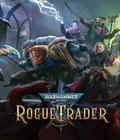
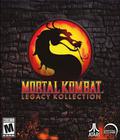
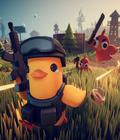
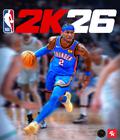
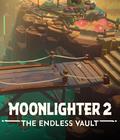
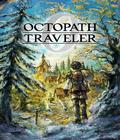
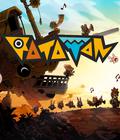
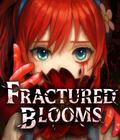

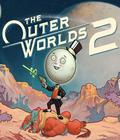 The Outer Worlds 2 takes place in a new star system with a new crew.
The Outer Worlds 2 takes place in a new star system with a new crew.













